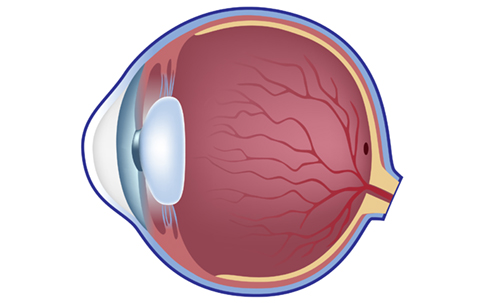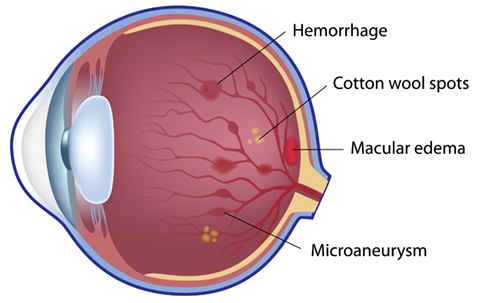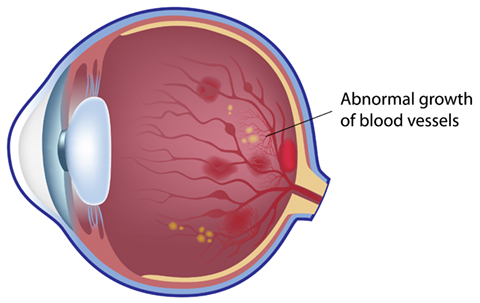Diabetic Eye Disease
Diabetic Retinopathy is a complication of diabetes that causes the deterioration of the blood vessels in the retina due to high levels of blood sugar. Diabetes is a condition that causes a higher level of blood sugar than normal because the body is unable to properly use and store the sugar. These abnormal blood vessels may either bleed or leak fluid or grow on the surface of the retina, causing bleeding and scaring. Both of these complications can result in permanent loss of vision. Patients with diabetic retinopathy may not experience any changes in vision, so it is important for those with diabetes to have regular eye exams. The most common symptoms experienced are: blurred vision, sudden and severe loss in vision, rings around lights, dark spots, or flashing lights.
Normal Eye

Non-prolifertative Retinopathy

Proliferative Retinopathy

For slight cases of diabetic retinopathy, treatment may not be necessary; but close monitoring for changes and progression is important. In more advanced cases, laser photocoagulation may be performed. During this surgery, a laser uses a quick burst of light energy to treat the leaking blood vessels and reduce the abnormal blood vessels which prevent further bleeding and scaring. If the bleeding is severe, a Vitrectomy may need to be performed to remove the blood from the center of the eye. Since diabetes continuously affects the body, these treatments will not cure diabetic retinopathy.
